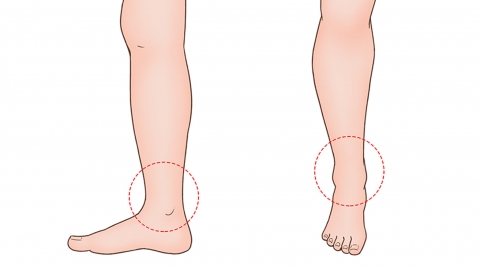Why does the lower leg turn white in patients with nephrotic syndrome, and what should be done?
In general, pale shins caused by nephrotic syndrome may be related to reduced skin blood circulation, anemia, lower extremity venous thrombosis, malnutrition edema, renal insufficiency, and other factors. Treatment options include general treatment, medication, and surgical treatment, as directed by a physician. Detailed analysis is as follows:

1. Reduced Skin Blood Circulation
Patients with nephrotic syndrome lose large amounts of protein, leading to decreased plasma osmotic pressure and uneven distribution of body fluids. This is often accompanied by edema symptoms. The swelling may compress leg blood vessels, impairing circulation and causing reduced blood flow to the shin skin, resulting in pallor. Regular moderate exercise, such as walking or yoga, should be maintained to promote lower limb blood circulation.
2. Anemia
Due to prolonged protein loss, patients with nephrotic syndrome may develop malnutrition-related anemia, resulting in reduced hemoglobin levels and pale skin and mucous membranes, including the shin area. A balanced diet rich in iron, folic acid, and vitamin B12 should be consumed, and regular complete blood count tests should be conducted to detect and correct anemia promptly.
3. Lower Extremity Venous Thrombosis
Patients with nephrotic syndrome are prone to developing lower extremity venous thrombosis due to a hypercoagulable state, vascular endothelial injury, and slow blood flow. Thrombosis blocking the leg veins can cause circulatory impairment, resulting in pale shin skin, possibly accompanied by pain and swelling. Medications such as heparin sodium tablets, warfarin sodium tablets, and urokinase for injection may be used under a physician's guidance.
4. Malnutrition Edema
Nephrotic syndrome causes massive protein loss, leading to decreased plasma osmotic pressure and fluid infiltration into tissue spaces, resulting in malnutrition edema. When this swelling compresses leg blood vessels and impairs circulation, the shin skin may appear pale, accompanied by symptoms such as reduced urine output and weight gain. Patients may use medications such as human albumin, vitamin B1 tablets, and furosemide injection as directed by a physician.
5. Renal Insufficiency
If nephrotic syndrome remains uncontrolled for a long time, it may lead to pathological changes such as glomerulosclerosis and tubulointerstitial fibrosis, with gradual decline in kidney function. Renal insufficiency typically results in the body's inability to effectively excrete metabolic waste and excess fluid, worsening lower limb edema and causing the aforementioned symptoms. Electrolyte disturbances and acidosis may also occur. Kidney transplantation may be performed under a physician's guidance, transferring a healthy kidney from a donor to a patient with kidney failure to replace the non-functioning kidney and restore normal urinary and metabolic functions.
Maintaining a balanced diet rich in nutrients, especially foods high in iron, protein, and vitamins, is important to prevent anemia and malnutrition.







